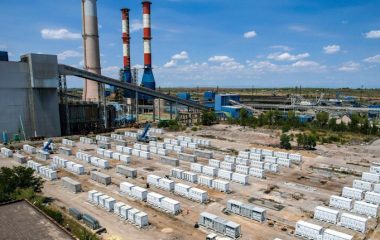
Photo: European Union
There is 67 GW of electrolyzer capacity in the pipeline in Europe, more than the EU target by 2030. However, the installed capacity is still low, said European Commission President Ursula von der Leyen. According to the IEA’s Global Hydrogen Report 2023, cited by Hydrogen Europe CEO Jorgo Chatzimarkakis, the implementation of projects is lagging worldwide, with only 4% of all projects having reached a final investment decision.
Ursula von der Leyen and European Commission Executive Vice-President Maroš Šefčovič yesterday kicked off the first of a series of Clean Transition Dialogues aimed to help implement the European Green Deal and support the decarbonization of European industry.
The first dialogue was dedicated to hydrogen, with European Commission officials engaging with representatives from the entire H2 value chain.
Speaking about achievements of the European Commission regarding hydrogen, von der Leyen said that the EU regulatory framework for hydrogen is almost complete, that massive investments to speed up the transition are in place, and that the development of a global market for clean hydrogen is underway.
Von der Leyen: There are 67 GW of electrolyzers in the pipeline
“We will soon have a full set of clear rules to support our emerging hydrogen market. We are the only continent where this is the case. It means clarity and predictability for your investments,” she said in her opening speech.
Von der Leyen pointed out that the investments are coming via the NextGenerationEU and REPowerEU, that the commission has authorized over EUR 17 billion in state aid for 80 hydrogen projects across the EU, and that the first auctions of the Hydrogen Bank are scheduled for next month.
“There are 67 GW of electrolyzers’ capacity in the pipeline. And that is amazing. It is well above our ambitious target of 40 GW by 2030 that we put in our hydrogen strategy. But our installed capacity is still too low. So, we need to build a bridge between ambition and reality. And this is where today’s dialogue comes into play,” she stressed.
Chatzimarkakis: The final investment decision is at 4% of all world projects in the pipeline
Hydrogen Europe CEO Jorgo Chatzimarkakis said it is an honor that hydrogen was picked for the first Clean Transition Dialogue. He added that it also shows that hydrogen has become a priority for the new industrial revolution on cleantech.
“It’s encouraging to see on the map of the International Energy Agency (IEA) on a global scale the projects on hydrogen all over the globe. They are mushrooming!” he stressed.
Europe is by far leading the way regarding the absolute number of projects.
“This is good. What’s the problem? The final investment decision is at 4% of all of these projects. 4%! The gap is tremendous,” Chatzimarkakis said but added that it could be fixed.
He also listed the main conclusions of the first Clean Transition Dialogue on hydrogen. Among them is the need to ensure a consistent hydrogen supply, a technology-diverse approach to production, and a gradual greening.
The existing joint purchasing exercise in the gas sector can be integrated into the Hydrogen Bank activities.
“There is an unprecedented financing need, up to around EUR 570 billion by 2030 if the 10 million tons of green hydrogen are to be produced. To get there, the Hydrogen Bank needs to serve as a one-stop shop, simplifying and accelerating procedures, allowing communication and de-risking the business with the help of the European Investment Bank (EIB) and the other public national banks,” he said.
To build up domestic capacity, building an EU value chain in critical technology will be key, while permitting procedures need to be simplified.
“We need an aggregation of demand. The existing joint purchasing exercise in the gas sector can be used as a good experience to build upon and to be integrated into the Hydrogen Bank activities,” Chatzimarkakis stressed.


















Be the first one to comment on this article.